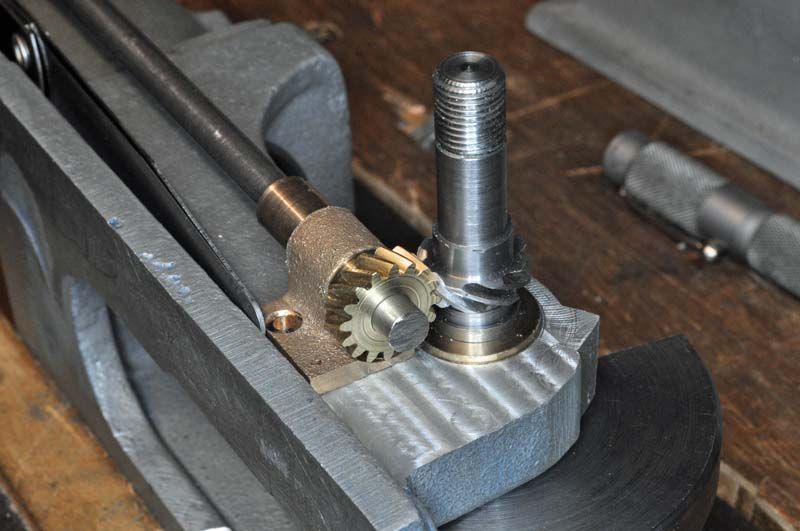That gear looks awful,either a blunt gear cutter or the result of using a poorly supported mandrel,as described above this is the larger gear of the pair so it fits on the side shaft which must be small in diameter.The way to make such gears is to turn the gear blank at one end of a solid shaft with a longer collar,and a centre hole.set up in a universal dividing head,shaft in chuck and dividing head tailstock brought up to support the shaft via the centre hole,The teeth are then cut,and the shaft is then put back in the lathe and the gear parted off, the long collar on the gear is then held in a collet and the gears is then faced,drilled (or bored)and reamed and it can then be reversed in the lathe and the collar reduced to correct length.With such small gears there is not much room or clearance when getting the cutter set at an angle up to the gear blank but also missing the tailstock.I have made a lot of stationary engine gears straight cut and spiral ,the small ones are the difficult and expensive ones and unless the engine is very old and valuable the cost of the gears is too high for a new model.For general info the Spiral magneto gear on Petter M stationary engines is another gear with a small tapered hole to suit the magneto spindle,I worked out how they made them,the gear has a machined recess on one face and short machined spigot on the other face,the machining is very accurate so that one gear can mate up with one or more gears via the recess/spigot. so a stack of gears can be held accurately together, there are also three equi spacedcast holes in the gear,these are clearance holes take studs or bolts so they can be held firmly together on a tooling fixture which also has a mating spigot ,the fixture is held in the spindle of the gear cutter or a dividing head,with the other end of the stack supported by a centre,I just wonder how many were made at a time ,as Petters made a lot of the M type engine. Regarding the poor purchased gears its catch twenty two,either return them and then have no gears or just accept them and live with it, I know the gears look rough but I can assure you that there are a lot of gears on vintage stationary which look worse than yours having survived possibly 80 odd years of use , disuse ,abuse,and rust, If desperate I would run them,do not lap them in ,grinding grit is awful stuff and can cause further difficulties. Another point is that some engines mainly pre 1900 had the spiral side shaft gears cast and just dressed up with a file and they run very well,the only snag with such gears is that the pattern was made to DP sizes and subsequently the cast gear shrunk on cooling ,a pair made like this ran OK making a modern replacement for one or a pair causes a few headaches, though they can be overcome with some adjustment of the cutter depth etc etc all good fun.
Muzzer.







